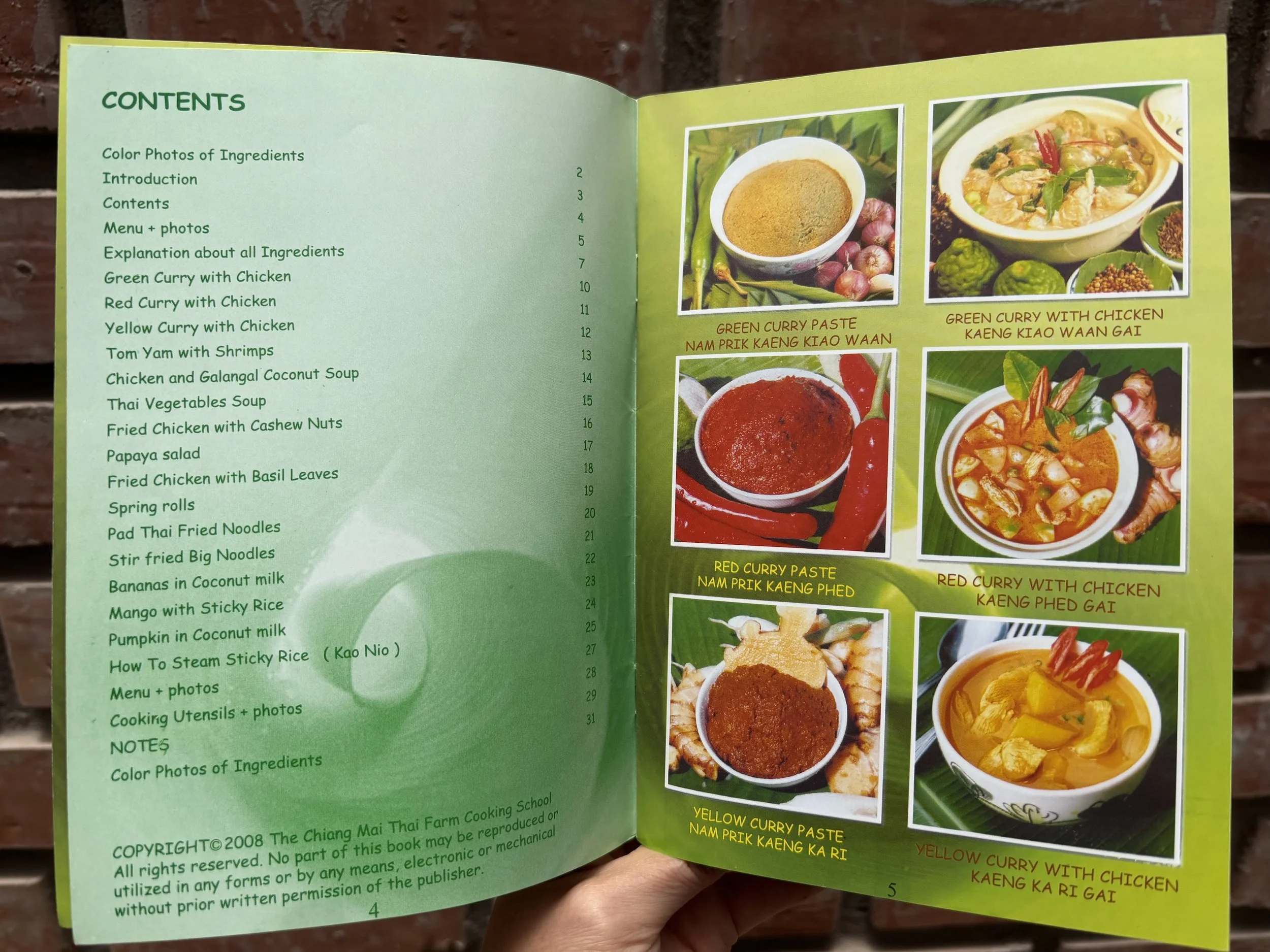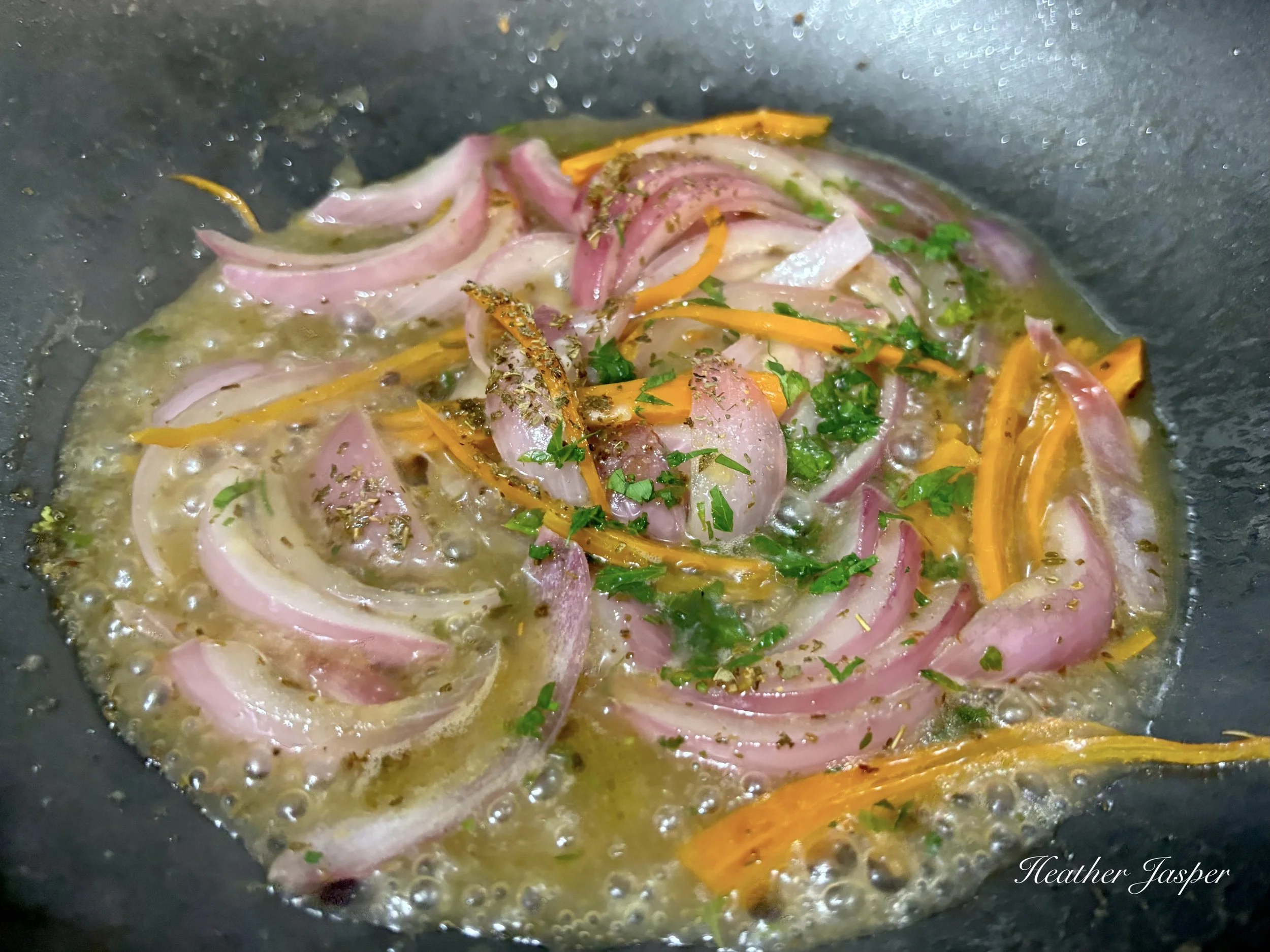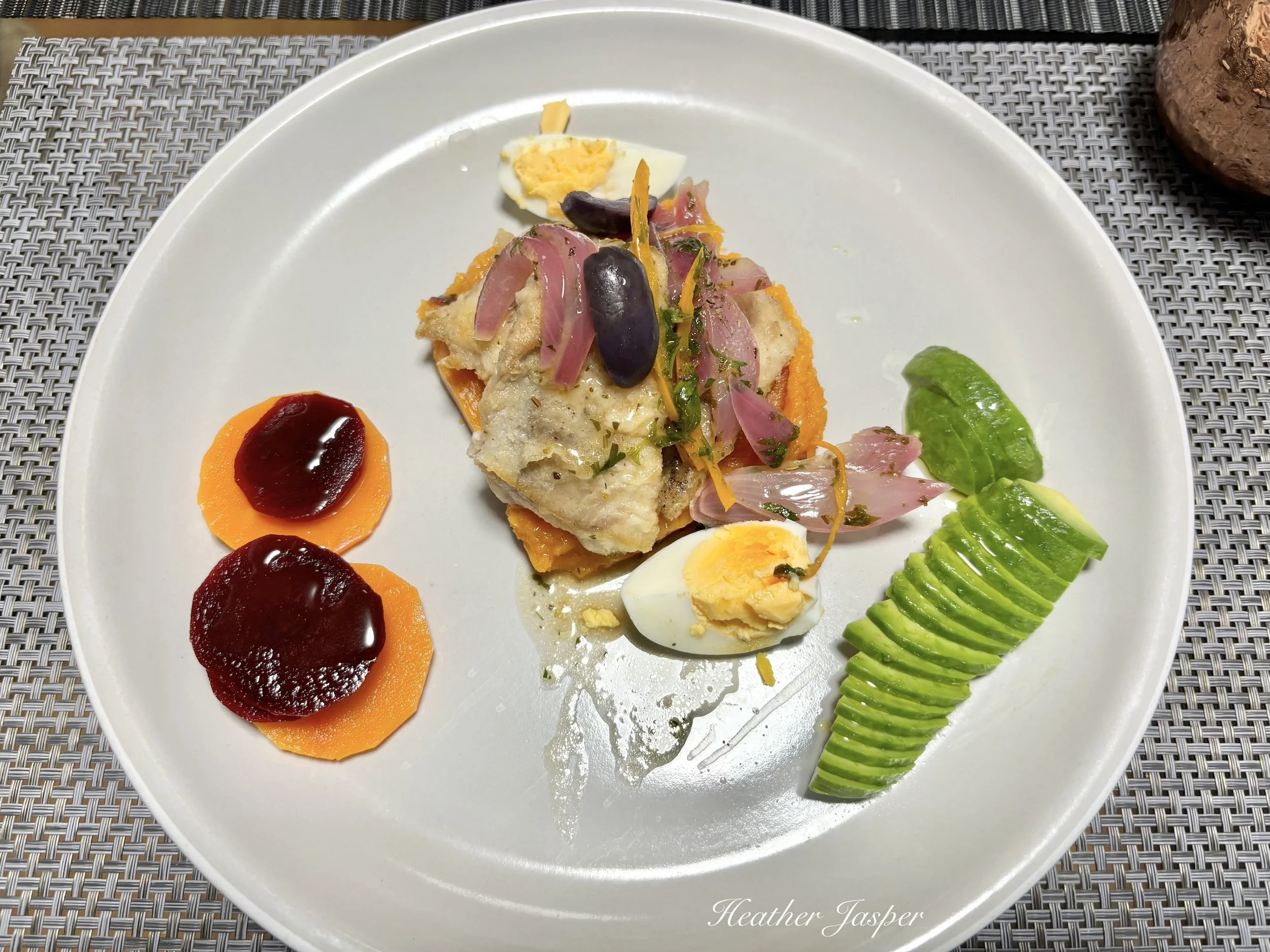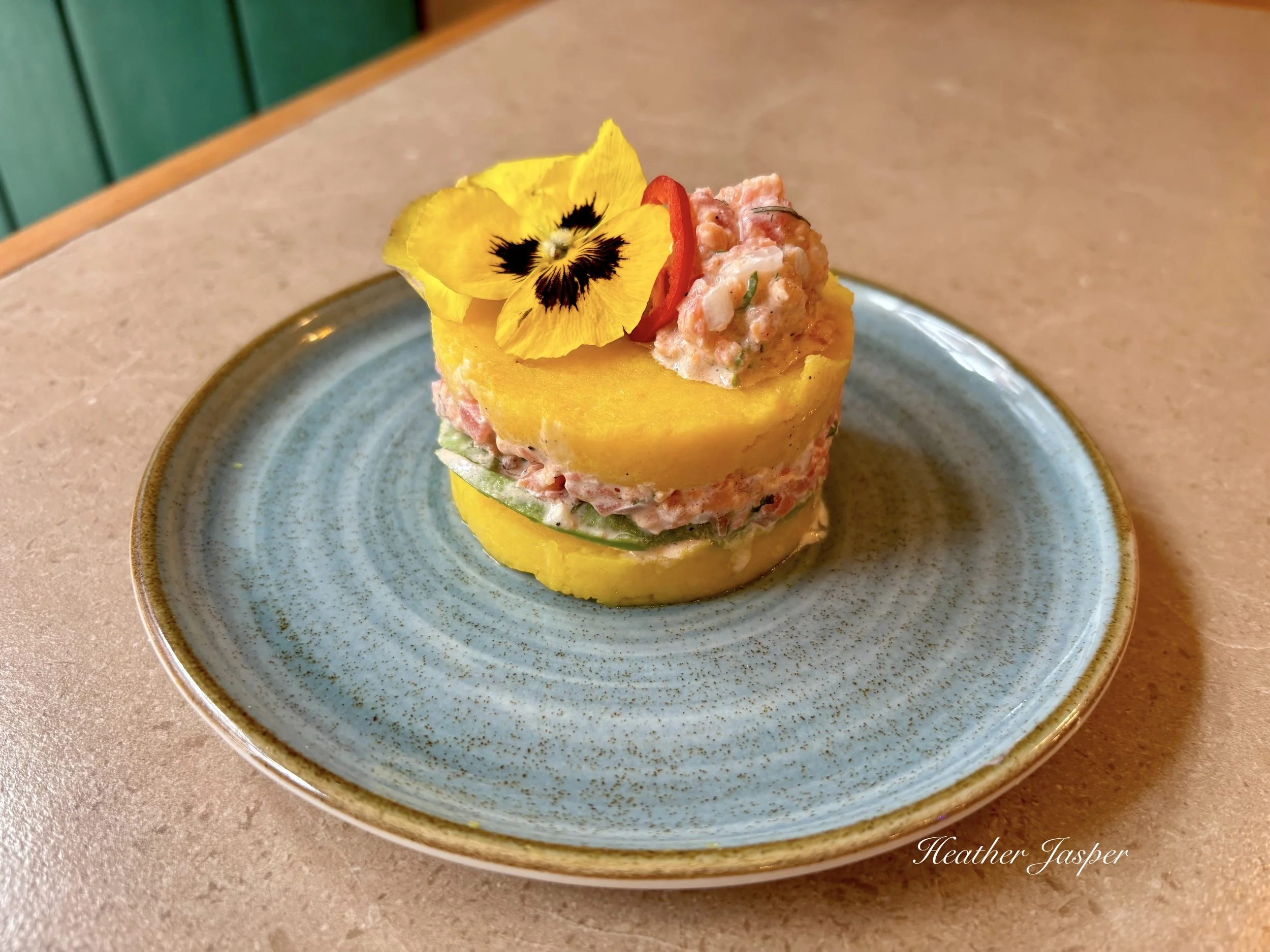Travel Tip 124
How to experience local cuisine
With all our prepped ingredients at the Cusco Gastronomic Tours & Cooking Class.
Eating vs. Tasting vs. Experiencing
There’s eating local cuisine in restaurants, tasting local cuisine with tasting menus and there’s the full experience of learning how to cook local cuisine and then eating what you made.
I highly recommend cooking classes when you travel!
Getting ready to make green curry paste from fresh ingredients I picked on the farm.
My first cooking class was in Chiang Mai, Thailand in 2015.
Before that class, I’d gotten cooking tips and helped people in their kitchens in France, Morocco, Nepal and Malaysia, but Chiang Mai was my first all-day cooking class. They picked me up at my hotel in the morning, then drove me out to the farm for a true farm-to-table experience.
After everybody in the class chose five dishes off the menu, we went out into the fields to pick the spices, fruits and vegetables we would need. They already had meat and tofu prepped for us. I learned to make green curry, galangal coconut soup, papaya salad, spring rolls and mango with sticky rice for dessert.
It was so much fun and left such a big impression on me that even ten years later I have no trouble remembering what we made. I even still have the cookbook, below, though I wish they had given it to us at the beginning of the day so I could have written notes in it.
Last year, I did a cooking class in Lima.
My first cooking class in Peru was in Lima with chef Sandro Reghellin, booked through Traveling Spoon. He taught me to make escabeche, which was delicious.
How to find cooking classes?
When you’re planning your trip, look for international companies like Traveling Spoon and check social media for local cooking schools and chefs who offer cooking classes at their home or restaurant.
New Blogs
Since I did three cooking classes this week, I have three new blogs for you. They all had me cook roughly the same things: pisco sour, ceviche and lomo saltado. Ceviche and lomo saltado are both classic Peruvian fusion dishes and while they both require a lot of chopping and prep, the actual cooking goes very quickly. Here they are in the order I experienced them.
You can make lomo saltado with chicken if you don’t want beef, making it pollo saltado.
Peruvian Cooking Class
This usually includes a market tour, but we skipped that and went straight to fruit, pisco sour, ceviche as appetizer and lomo saltado for main course. This one would be the best for big groups, though my class had only one other person. They also do a cocktails and chocolates class that you can do after the cooking class.
The ceviche I made, served with a skewer of potato and alpaca sausage in Huancaina sauce.
Marcelo Batata’s Cooking Class
This cooking school is far from markets and doesn’t include a market tour. Marcelo Batata has the best sous-chef, and this class involved the least chopping but the most tasting and cooking. We tried nine local fruits and two appetizers before we did a pisco tasting and made two cocktails. We made ceviche as an appetizer and lomo saltado for the main course.
The causa I made with a trout filling at the Cusco Gastronomic Tours & Cooking Class.
Cusco Gastronomic Tours & Cooking Class
This class started with a tour of the famous San Pedro Market then an outdoor market for fresher fruits and vegetables. We tasted a few fruits, then cheese and bread before doing a lot of chopping and prep work. After that was a pisco sour and we made a traditional potato appetizer called causa. We got a choice of ceviche or lomo saltado as the main course.
New Article
Time Out World’s Coolest Neighbourhoods
I wrote about Barranco, Lima for the World’s Coolest Neighborhoods. Scroll down - there’s 39 cities featured.
This was actually published in September, but I didn’t notice until this week. If the editor doesn’t tell me that something I wrote was published, I don’t usually think to check until they get around to paying me.











